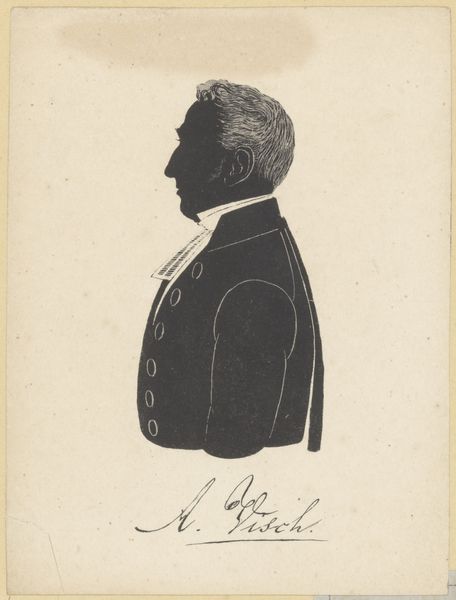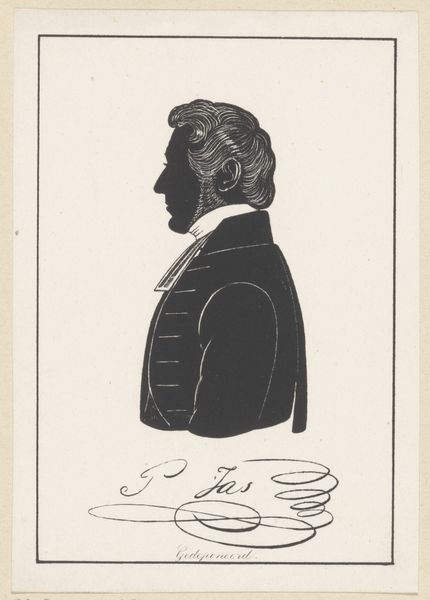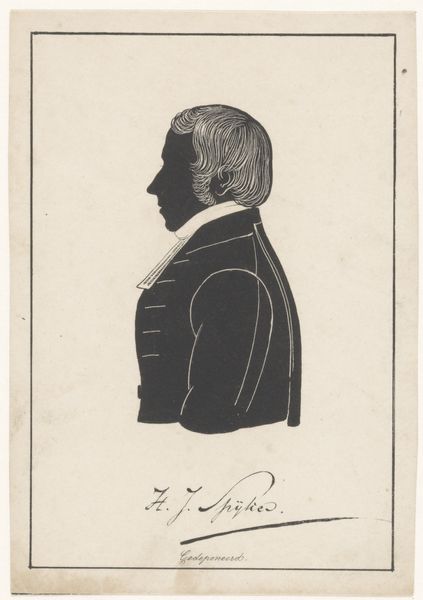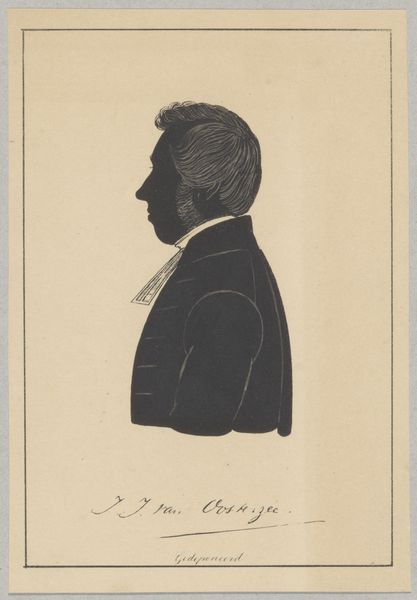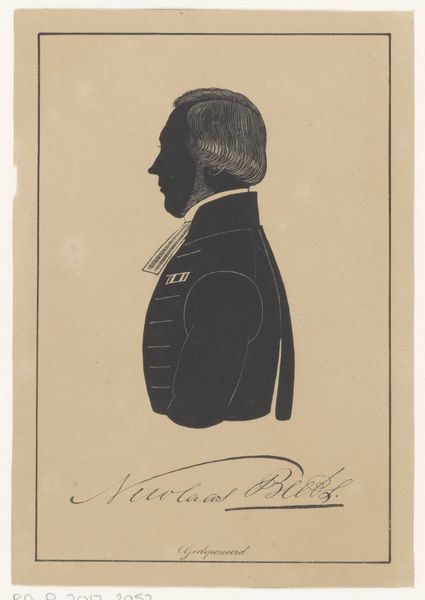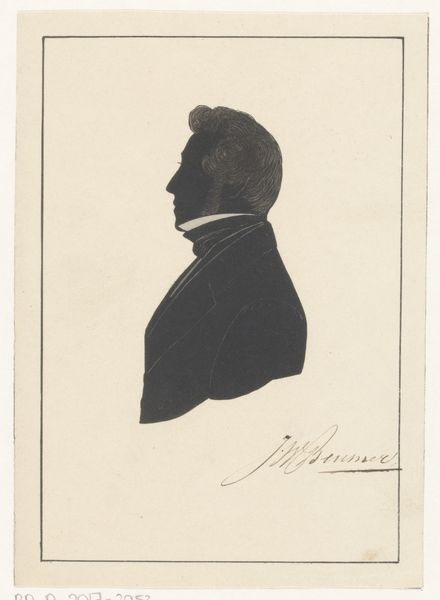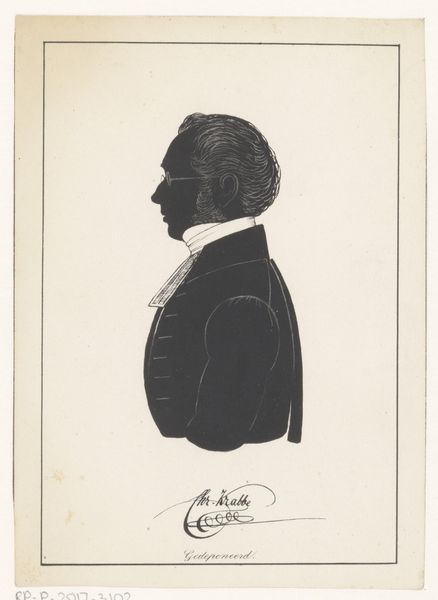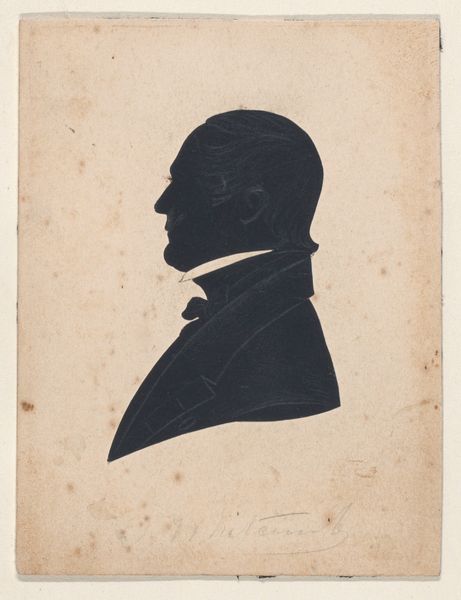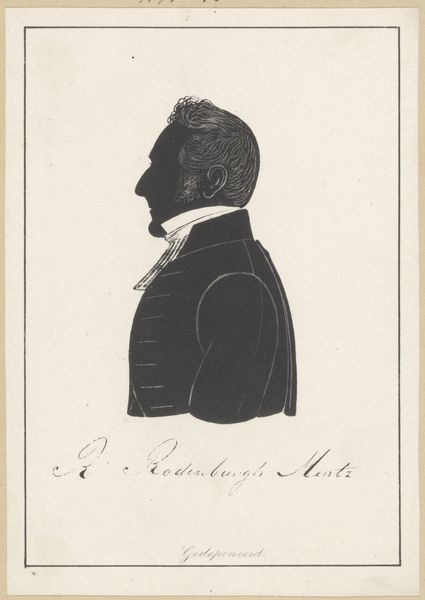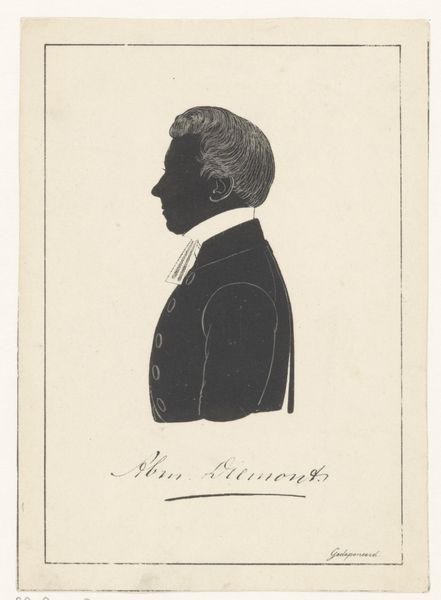
drawing, paper, graphite
#
portrait
#
drawing
#
aged paper
#
light pencil work
#
old engraving style
#
paper
#
romanticism
#
graphite
Dimensions: height 149 mm, width 108 mm, height 292 mm, width 241 mm
Copyright: Rijks Museum: Open Domain
Curator: What a striking silhouette. I'm immediately drawn to the sitter's rather austere and solemn demeanor. Editor: Indeed. Here we have a silhouette portrait of W.H. Sloet by Pieter (IV) Barbiers. Created sometime between 1809 and 1848, this work on paper, utilizing graphite, exemplifies the Romantic era's fascination with individual likeness captured in a minimalistic yet revealing format. Curator: The silhouette itself holds such historical weight. It’s almost like a ghostly imprint of a person. Silhouettes were so popular before photography; they offer this accessible, almost democratic representation. Who was allowed, and who was not, of course shifts according to what strata of society one is born into, in reality. I also can’t help but read something akin to mourning or remembrance into these old-fashioned forms. Editor: It's interesting that you mention accessibility. The silhouette as a form served various purposes—documenting identity in a rapidly changing society but also shaping social perceptions. Notice how the clean, graphic style can both conceal and reveal? It's as if the essence of W.H. Sloet is being simultaneously presented and withheld. Curator: Precisely! It invites contemplation on presence and absence, visibility and invisibility, almost a coded language of status during that period, especially the way details like the clothing and hairstyle are meticulously rendered in stark contrast. We can intuit societal class indicators, the values imbued by one's class, by the cut of his suit and coiffure. And, even further, notice how much emphasis is placed on the *signature* versus any information about Sloet himself. I find the psychological tension almost unbearable, the secrets the man himself held in contradistinction to the graphic information displayed in public form. Editor: Absolutely. Moreover, silhouettes, though seemingly simple, could also perpetuate existing power structures by selectively immortalizing certain figures, in a certain style that re-enforces existing societal tropes. Thinking about W.H. Sloet now, what narratives might have been left out, what complexities smoothed over in this pursuit of concise representation? What happens to minoritized communities and other groups absent of this sort of image in the culture at the time? Curator: Food for thought. Silhouettes really demonstrate how images become cultural memory, echoing through the years and embodying the tensions of identity and representation across eras. Editor: And highlighting art’s inescapable ties to the societal and political landscape that produces and receives it. A shadow says a thousand words, perhaps.
Comments
No comments
Be the first to comment and join the conversation on the ultimate creative platform.
